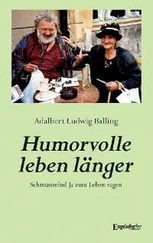Suez on the Red Sea – the canal was just then being built – was their next destination:
“Our short stay at the little town of Suez turned into a distressing experience for me. I caught dysentery, wide spread in those parts, which confined me to my room for several days. Relief finally came in the form of a remedy the hotelkeeper offered: rice cooked in unsalted water. Later, in Bosnia, I prescribed it to great effect for my sick Brothers, and when I was in London I was able to cure a whole family with it.”
The group disbanded at Suez and everyone went home by his own way. Fr. Pfanner chose to travel via Constantinople “on the same ticket and for the same fare”. He was much impressed with the Golden Horn and a cruise on the Black Sea. From Kuscendje he journeyed by train to the Danube and by a Hungarian steamer up that great water way to Belgrade and Semlin. There he transferred to a Sava-boat and later once more to a train which eventually took him to Agram.
“When my coach drove through the convent gate and I got off, no one welcomed me. Sister Portress did not recognize me on account of my pilgrim’s beard which, as a matter of fact, had not felt a razor for fully three months! I wore it for three more days and during that time paid my respects to the cardinal archbishop.
The glory of the world and its pomp held no more attraction for me. I was only waiting for the letter that would allow me to leave the world. There were all kinds of letters waiting for me on my return but none from my bishop. So I wrote again. This time I mentioned my visit to the Orient and the Holy Land and that everything was but vanity. The only wisdom, I concluded, was to serve God in order to see him when life was over.”
This time the bishop answered by return post. He wrote that he envied Pfanner his “holy solitude” and would love to hide himself away as well, if only he were free.
Goodbye to the World
Before leaving the world for good, Fr. Pfanner took leave of close relatives and friends. In a letter to his classmate Berchtold, pastor of Hittisau in Vorarlberg, he recalled their ordination thirteen years earlier and touched on his recent experiences. Returned from a great journey that took him: “from the cedars of Lebanon to the Red Sea with its pearl oysters”, he had no words to describe what he had seen and felt. He could only hint, for “at such times the heart is drowned in the joys of a world it has never known”!
The Feast of the Nativity of Mary (8 September) was reception and profession day for many of the Sisters in Agram. Fr. Pfanner preached the sermon and afterwards joined them for supper and Evening Prayer. Then he retired to his apartment. He wrote a few more letters to his loved ones and later that evening asked the mother superior for additional traveling cases. She looked at him, apprehensively: “Where are you going, Father?” He: “I leave tomorrow morning early to become a Trappist.” Thunderstruck, she cried: “Oh no! I cannot agree! Before you came, over thirty sisters suffered from scrupulosity. You helped them overcome it. But now I have to carry this heavy cross again by myself.” The good woman broke down, but he did not allow himself to be moved. Only to a friend he confided in a letter: “It is not easy to pull myself away, but I must follow my inner call. I want to live out my days in seclusion and solitude … I desire nothing more fervently than that God would accept my resolution. Please, remember me to your loved ones and pray for me that I do not waver in my resolution.”
His mother and siblings were still in the dark about his decision. His farewell letter to them is dated 8 September, 1863, like the others:
“I am leaving Agram for good. Tomorrow I travel to a Trappist Monastery in the Rhine Province in Germany. I recognize that this is God’s will for me, just as I recognized thirteen years ago that I should become a priest. My bishop in Brixen has approved of it … I have no desire for wealth, prestige or honour in this world. My only wish is to live poor and unknown for the rest of my life, if at all they can use me in the monastery. I beg you to pray for me that I may have the strength to do all that is asked of me … Farewell. Live in such a way that one day we will meet again in heaven! My brothers and sisters, support our old mother. Ease the burden of her responsibility for the family by rendering her obedience.”
Serious and Humorous Thoughts
By Francis Wendelin Pfanner
The principle I followed when I was in school was to do all my assignments, but not a thing more than was required!
Pride and foolishness belong together and are hatched by the same hen. As long as the world lasts there will be foolish and ignorant people.
The sinister fellow is not the one who looks for light and enlightenment in the dark, but the stay-at-home who, too lazy to think, does nothing but roar from the dark.
If the heart is at peace it is easy to pray. Look at the water. When its surface is calm, you can look through it and count every pebble on the floor.
It is an art to live in a religious community and rub off your shortcomings and rough edges on the shortcomings and rough edges of others.
Praying and Working with Silent Monks
Fr. Pfanner traveled to Cologne via Vienna. At Wuerzburg he looked up his “secretary of pilgrim days”, while in Cologne he waited impatiently for his connection to Heimbach, the station closest to Mariawald:
“For three long hours I sat in the cathedral, but this time I had no eyes at all for the gorgeous stain glass windows or the gothic architecture, which fourteen years earlier had cast such a spell over me. ‘Why should I?’ I told myself; ‘it’s pure vanity! Once in the monastery, I cannot share what I have seen with anyone’.”
Climbing for an hour through a gorgeous beech wood he arrived at Mariawald. The monastery had been secularized in 1802 and the monks expelled. Two years before he knocked on its door Trappists from Oelenberg in the Alsace had resettled it (1861), but the actual work of reconstruction had only just then begun.
Abbot Francis:
“The beautiful Gothic church had no roof, windows or doors; even the iron bars had been broken out of the ashlars and carried off. The miraculous picture of Our Lady had been transferred to the parish church of Heimbach, where it was preserved in a separate chapel. The beautiful Gothic windows ended up in a museum in England and the monastery buildings had served as a quarry for anyone who needed stones. – The farmland was extremely poor and rocky and there was hardly enough level ground to build on.”
When Fr. Pfanner arrived on 10 September, 1863, Mariawald numbered not quite twenty monks. At thirty-three years of age the Prior was five years his junior. He was away in France attending the annual Trappist general chapter. Until his return the candidate was put up in the guest quarters. Six weeks later, on 9 October, the feast of St. Abraham, he was given the habit of the Reformed Cistercians and a new name. As Fr. Franciscus (after the Poverello of Assisi) he became a member of the Trappist Congregation of de Rancé.
His life was now ordered by the rule with its daily schedule of ora et labora .
Abbot Francis:
“My first assignment was to weed the garden. So I had to bend a lot. It was something my back did not like, but since no one asked me how I felt, I carried on, telling myself that in due time I would be given another occupation. I was mistaken. Instead, I realized that all that was expected of me was to help rebuild Mariawald … Time passed quickly. As I became better acquainted with the life of a novice and entered more deeply into the meaning of the Trappist vocation, things became easier. I even started to doubt if after all this was the life of penance I was looking for.”
Читать дальше












